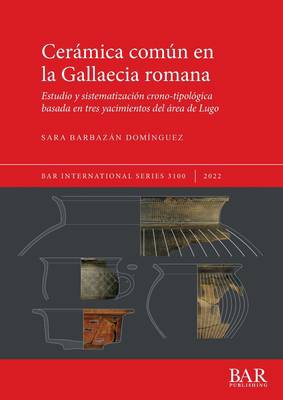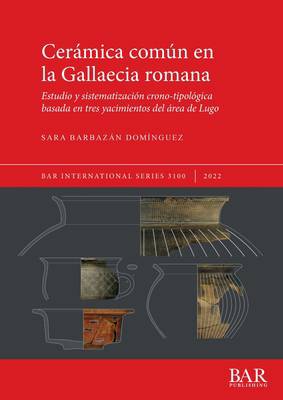
- Retrait gratuit dans votre magasin Club
- 7.000.000 titres dans notre catalogue
- Payer en toute sécurité
- Toujours un magasin près de chez vous
- Retrait gratuit dans votre magasin Club
- 7.000.0000 titres dans notre catalogue
- Payer en toute sécurité
- Toujours un magasin près de chez vous
Cerámica común en la Gallaecia romana
Estudio y sistematización crono-tipológica basada en tres yacimientos del área de Lugo
Sara Barbazán DomínguezDescription
Este libro se centra en la caracterización de las producciones de cerámica común presentes en contextos de época romana de yacimientos del entorno de la antigua ciudad de Lucus Augusti (Lugo, España). A través de un enfoque que apuesta por el análisis de una cultura híbrida que tiene su eco en el registro cerámico, abordamos el estudio de la cerámica común de los castros de Saa (A Pastoriza), Agra dos Castros (Marcelle) y Viladonga (Castro de Rei). Se trata de yacimientos situados a diferentes distancias de la ciudad con ocupaciones en diferentes periodos que van desde el siglo I a.C. hasta el siglo V d.C. A través del estudio de estos yacimientos observamos las distintas realidades en esta área, lo cual ayudará a interpretar las transformaciones que se produjeron tras la integración de este territorio en el mundo romano.This book examines the characterisation of common pottery productions present in Roman period contexts at sites around the ancient city of Lucus Augusti (Lugo, Spain). Using an approach that focuses on the analysis of a hybrid culture, which is echoed in the pottery record, we study the common pottery from the hillforts of Saa (A Pastoriza), Agra dos Castros (Marcelle) and Viladonga (Castro de Rei). These sites are located at different distances from the city and were occupied during different periods from the 1st century BC to the 5th century AD. Through the study of these sites, we observe the different realities in this area, which help to interpret the transformations that took place after the integration of this territory into the Roman world.
Spécifications
Parties prenantes
- Auteur(s) :
- Editeur:
Contenu
- Nombre de pages :
- 208
- Langue:
- Espagnol
- Collection :
- Tome:
- n° 3100
Caractéristiques
- EAN:
- 9781407360195
- Date de parution :
- 04-11-22
- Format:
- Livre broché
- Format numérique:
- Trade paperback (VS)
- Dimensions :
- 210 mm x 297 mm
- Poids :
- 680 g

Les avis
Nous publions uniquement les avis qui respectent les conditions requises. Consultez nos conditions pour les avis.






